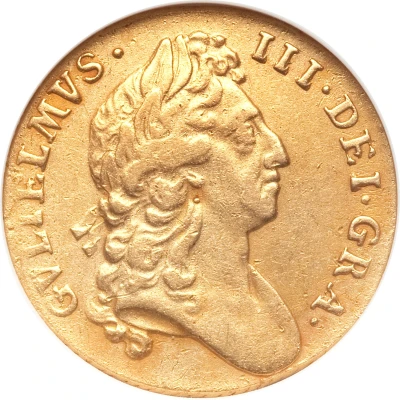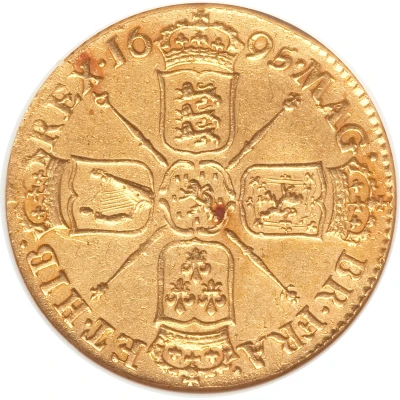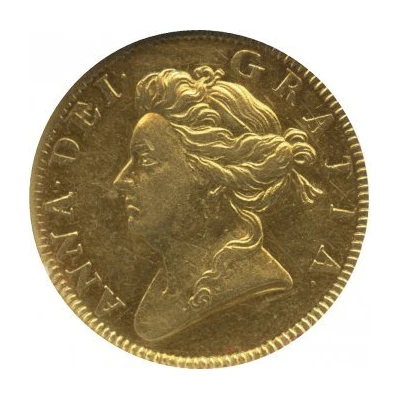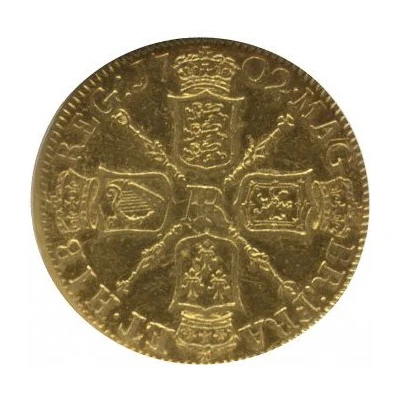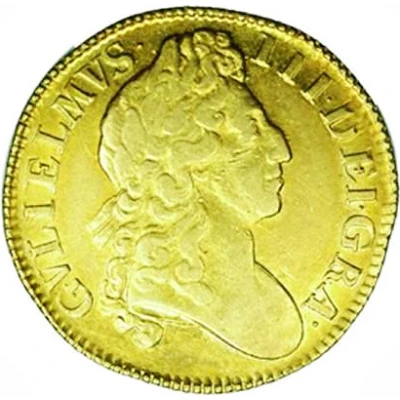
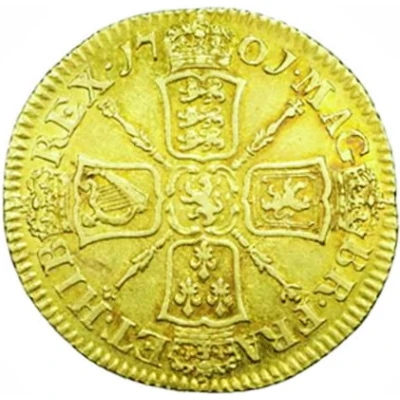

© Heritage Auctions
1 Guinea - William III 2nd bust
| Gold (.917) | 8.39 g | 26 mm |
| Issuer | England (United Kingdom, British Overseas Territories and Crown Dependencies) |
|---|---|
| King | William III (1694-1702) |
| Type | Standard circulation coin |
| Years | 1697-1701 |
| Value | 1 Guinea (43⁄40) |
| Currency | Pound sterling (1158-1970) |
| Composition | Gold (.917) |
| Weight | 8.39 g |
| Diameter | 26 mm |
| Shape | Round |
| Technique | Milled |
| Orientation | Coin alignment ↑↓ |
| Demonetized | Yes |
| Updated | 2024-10-09 |
| Numista | N#12974 |
|---|---|
| Rarity index | 97% |
Reverse
Crowned cruciform shields around central Nassau lion with sceptres bearing national emblems in angles, divided date above, legend around.
Script: Latin
Lettering: MAG· BR·FRA· ET·HIB REX·17 01·
Translation: King of Great Britain France and Ireland
Engraver: John Croker
Edge
Milled
Comment
These coins were struck at 44½ to the pound troy, giving a standard weight of 24/89 troy ounce (129.4 grains).During the period 1696 to 1698, the guinea's value rose to 30 shillings, then was reduced in stages by Act of Parliament until it settled at 21 shillings 6 pence in 1698.
Several varieties exist with or without elephant and castle below bust, larger legend and date, narrow crowns:
Sp#3460, KM#498.1 (1697-1700) Second laureate bust;
Sp#3461, KM#498.2 (1697-1700) Elephant & castle below;
Sp#3462 (1698 only) Similar, human headed harp, large lettering & date;
Sp#3463, KM#498.1 (1701 only) Similar, narrow crowns, plain or ornamented sceptres;
Sp#3464, KM#498.2 (1701 only) Similar, elephant & castle below.
Interesting fact
One interesting fact about the 1 Guinea - William III (2nd bust) coin is that it was issued during a time of great economic change in England. The coin was introduced in 1697, just a year after the Great Recoinage of 1696, which aimed to address the issue of clipped and worn coins in circulation. The new coinage system introduced by William III helped to stabilize the economy and paved the way for the development of the modern British currency system.
